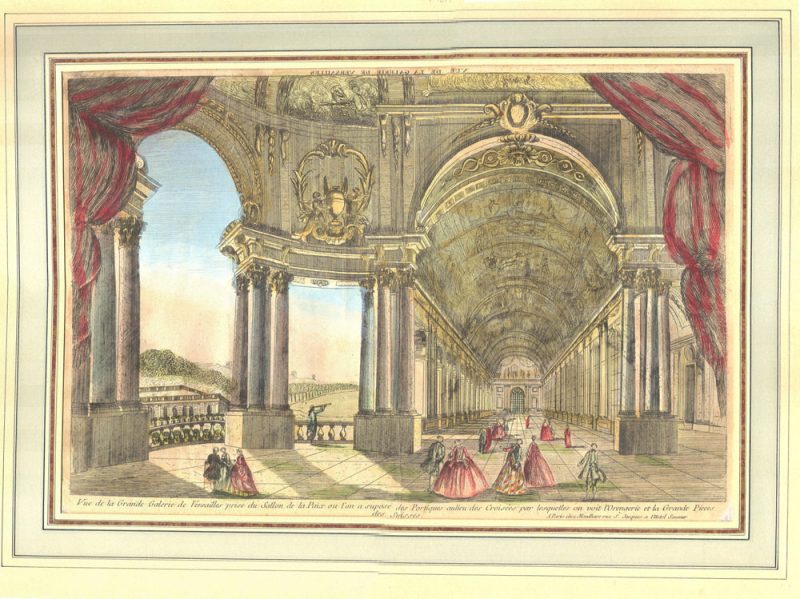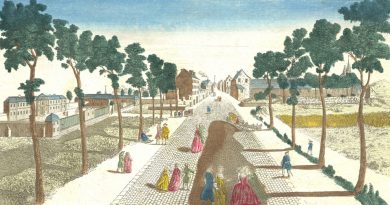Grande Galerie de Versailles – 18th Century Perspective View Engraving
Perspective View of Versailles
Title on Engraving: “Vue de la Grande Galerie de Versailles prise du Sallon de la Paix ou l’on a supose des Portiques aulieu des Croisees par lesquelles on voit l’Orangerie et la Grande Piece des Suisses”
This handcolored copperplate engraving dates to the late 18th Century (circa 1780 or 1790).
La Grande Galerie, also known as La Galerie des Glaces or Hall of Mirrors is a vast gallery 75 meters long, 10.5 meters wide, and 12.30 meters high. It was considered the most prestigious spot in the Chateau de Versaille and is one of the most famous features of the residence of the French Kings.
Construction of the Grande Galerie began in 1678 under the supervision of the architect Jules Hardouin-Mansart and its vaulted ceilings were then decorated by the painter Charles Le Brun.
A later historical note; The Treaty of Versailles, which ended the first World War, was signed here in June 1919.
Dimensions: This image measures around 11.5 X 17 inches not incuding the attractive hand painted antique mat, which adds around 2 inches all around to the size of the piece.
Since we are based in Switzerland, we must add a note on the Piece des Suisses, the long basin which can be seen through the portico, just beyond the nobleman’s looking glass — During the late 17th Century, the Swiss Guards dug the basis for a large pool on the grounds of Versailles which is named after them: “La Piece des Suisses.”
Late 18th & Early 19th Century
Perspective Views (Also: Optical print, vue perspective, vue d’optique or in German, Guckkastenblättern) were meant to be seen with a special viewer or Zograscope to enhance the three dimensional effect. They were very popular in the 18th and 19th centuries. They were designed according to strict principles of linear perspective, with a distant object placed in the center of the print, as is the case with this example.
Viewed through a special “machine,” the three dimensional effect was enhanced. The colors of these wonderful old prints are often bright and naive, as for children’s illustrations. Traveling vendors — who went around to fairs offering views of the images through the Optical Machine for a few pennies — often did the handcoloring themselves, so it tends to be a bit rough compared with other period engravings. In our view this adds to the charm of these pieces!





